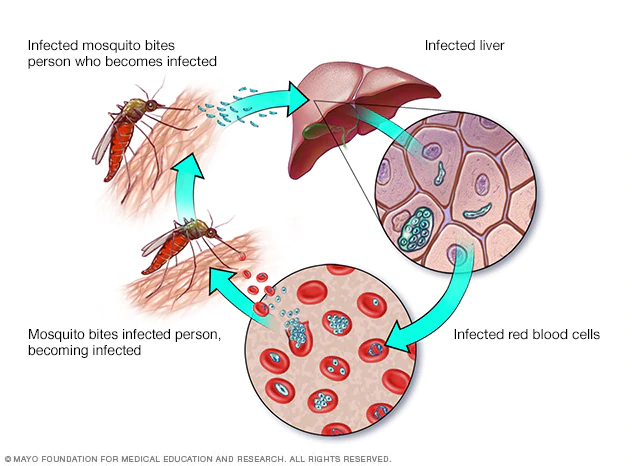Focus: GS-III Science and Technology
Why in news?
- The parasite Plasmodium vivax, responsible for 7.5 million malaria cases worldwide, remains understudied.
- An international team has developed a system to breed these parasites in the lab and then infect cultured human liver cells with it.
How does vivax parasite work?
- Mosquitoes inject the sporozoite (spore-like) stage of the parasite into the skin when they bite, and the sporozoites travel to the liver.
- As the number is very low in the liver, our immune system barely notices it. This was believed to be a silent stage.
- In the liver cells it reproduces asexually producing thousands of merozoites which infect new red blood cells and initiate a cycle of reproduction and infection.

More about Malaria
- Malaria is a mosquito-borne infectious disease that affects humans and other animals.
- Malaria causes symptoms that typically include fever, tiredness, vomiting, and headaches and in severe cases it can cause yellow skin, seizures, coma, or death.
- Malaria is caused by single-celled microorganisms of the Plasmodium group. – (Neither Bacteria, nor Virus)
- The disease is most commonly spread by an infected female Anopheles mosquito.
- The risk of disease can be reduced by preventing mosquito bites through the use of mosquito nets and insect repellents, or with mosquito control measures such as spraying insecticides and draining standing water.
- The disease is widespread in the tropical and subtropical regions that exist in a broad band around the equator – This includes much of sub-Saharan Africa, Asia, and Latin America.
- One of the complications is the emergence of drug-resistant malaria parasites. Certain malaria-endemic countries have even abandoned chloroquine for P. vivax treatment. Fortunately, chloroquine is still effective in India.
-Source: The Hindu




